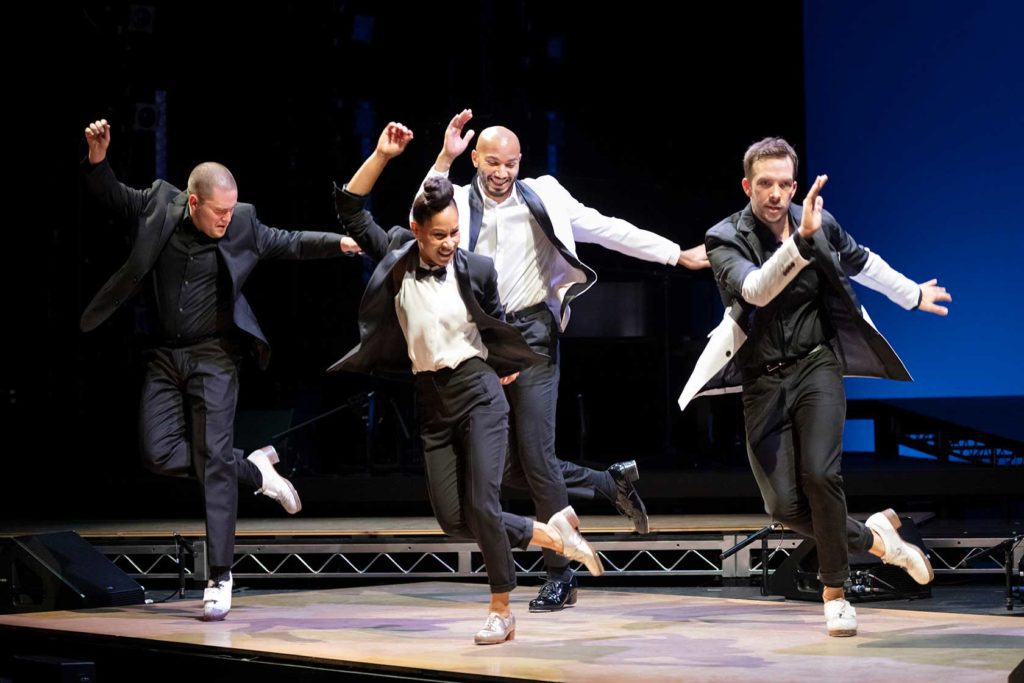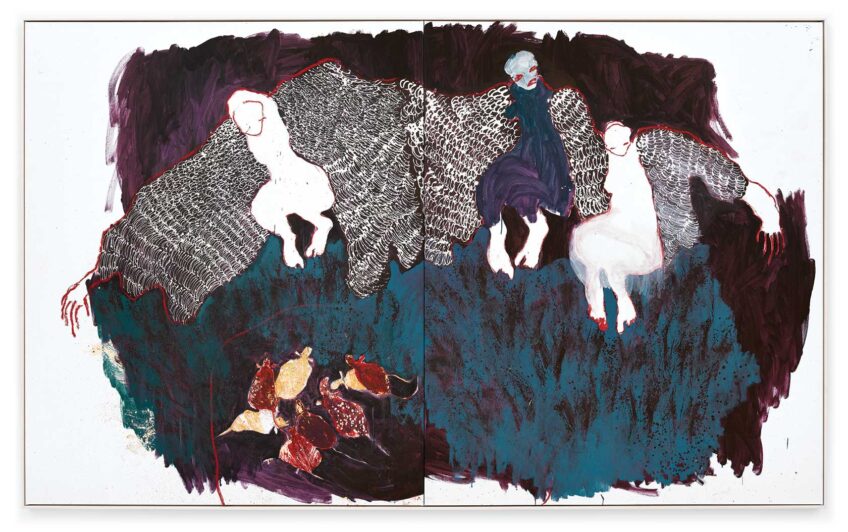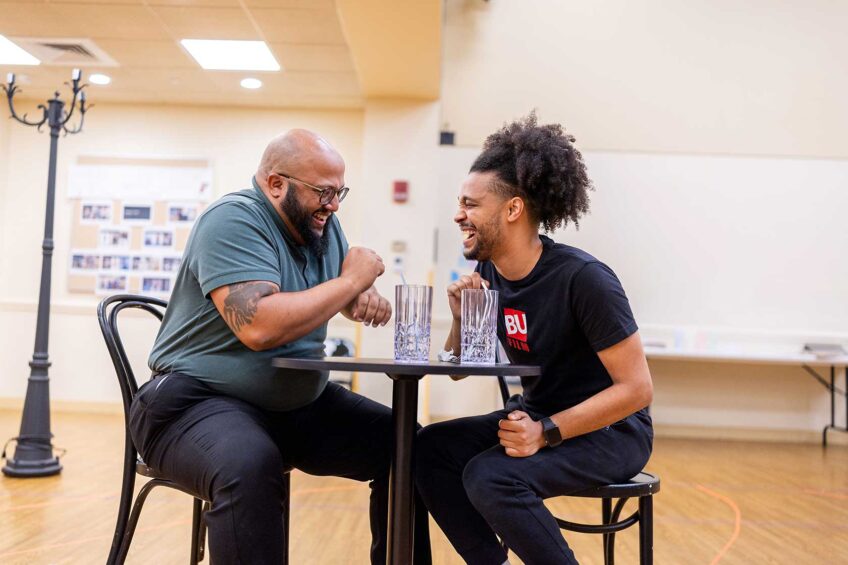Chasing magic and finding joy in tap
‘Ayodele Casel: Chasing Magic’ welcomes live audiences back to A.R.T.

Created and led by incandescent tap dancer and choreographer Ayodele Casel, “Ayodele Casel: Chasing Magic” made its onstage premier Thursday night at the American Repertory Theater in Harvard Square.
A film version, produced by the Joyce Theater in New York City, debuted in April to rave reviews. The same six dancers in the film perform in the 70-minute live production at A.R.T., which runs through Oct. 9.
Before the dancing began, the show’s director, Torya Beard, and Diane Paulus, A.R.T.’s artistic director, welcomed the audience to the premier, which was also the theater’s first live production since its pandemic shutdown in 2020. The audience gave them a standing ovation.
Casel, 46, has an ardent following here. While a 2019-2020 fellow at the Radcliffe Institute and Artist in Residence at Harvard, she developed a history of Black female tap dancers. She culminated her Cambridge stay with a sensational performance, “Diary of a Tap Dancer,” that celebrated these unsung heroines.
Born in the Bronx and raised in Puerto Rico, Casel has created a series of acclaimed tap shows that mingle autobiography with tributes to female hoofers of color who have gone before her. Casel is featured in the current series of U.S. Postal Service stamps honoring the art of tap and will be the tap choreographer for the upcoming Broadway revival of “Funny Girl.”
Beard’s staging complements Casel’s storytelling sound and spectacle. Costumes by Temma Richardson suit the onstage persona of each dancer. Dan Soule’s set features five intersecting platforms that the dancers span with leaps while keeping time. Atmospheric lighting by Jeanette Oi-Suk Yew alternates between jolts of color and serenity, and acoustic design by Alex Giorgetti captures the music of tap as well as the Afro-Caribbean score, in recordings and live segments by Cuban pianist Anibal Cesar Cruz, percussionist Keisel Jiménez, and music director Crystal Monee Hall, whose liquid vocals complemented the staccato sounds of tapping feet.
All but three of the program’s 15 selections were choreographed by Casel, who calls her practice of combining planned movement with improvisation “improvography,” a term coined by late tap megastar Gregory Hines.
The opening number, “Scalular,” takes its title from the music, a composition by multi-Grammy-winning composer, bandleader and pianist Arturo O’Farrill, a frequent collaborator with Casel. Dancing to a recording by O’Farrill and his Afro Latin Jazz Orchestra, all six dancers joined in drill-like unison stomping, and their solos sustained taut energy. Their costumes —matching trench coats that open to T-shirts emblazoned with each dancer’s initial — underscored the celebration of team spirit and individuality.
Next came a prayerful solo by Casel to Stevie Wonder’s ballad “Overjoyed,” arranged and performed by Cruz and sung by Hall, with percussion by Jiménez.
Casel and Anthony Morigerato celebrated their long collaborative friendship with debonair duets to recordings of “Fly Me to the Moon” and “Cheek to Cheek,” a nod to Fred Astaire and Ginger Rogers, whose movies introduced Casel to tap.
Not expected until later in the week-long run, O’Farrill stepped to perform an improvised duet with Casel entitled “The Sandbox.” A giant of a man, O’Farrill sat down at the piano and with power and delicacy wrested quick torrents of chords and notes from the keyboard, matched in speed and intricacy by Casel’s rippling feet. They were two masters at play.
Jiménez offered a spellbinding solo, “Al Centro,” shaking a drum wrapped in percussive shells as he sang in Spanish.
With silent, bare feet, Amanda Castro joined Jiménez for “Bomba II,” whirling in a long white dress to his drumming in a duo that evoked Afro-Latin religious rituals. Their interplay continued in “Meeting Place: Draft II.” With Casel, John Manzari, Morigerato and Naomi Funaki, Castro danced to Casel’s composition “Africa.” Via a video projection, Castro was joined in her flowing movement by acclaimed dancer and choreographer Ronald K. Brown, whose company Evidence draws from contemporary and Afro-Caribbean veins of dance.
All six dancers performed the finale, “The Magic,” to a song by Hall, accompanied by Cruz and Jiménez. Together, Casel and her ensemble concluded their homage to the power of dance to summon and lift spirits.






